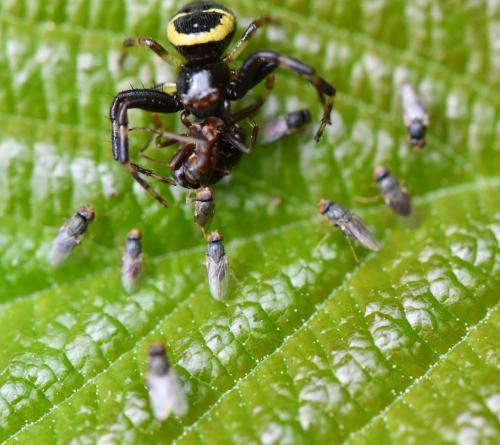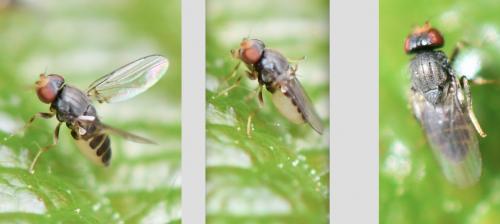#1
Hello,
this Chloropidae (Oscinellinae) was observed in june 7th in our garden (North of Yonne department in Burgondy). Should be perhaps Tricimba cincta. All my thanks for your opinion. Sincerely yours, Jean-Michel Garel.

Jean-Michel GAREL : France : Brannay : 89150 : 07/06/2021
Altitude : NR - Taille : Non mesuré
Réf. : 283572

Jean-Michel GAREL : France : Brannay : 89150 : 07/06/2021
Altitude : NR - Taille : 1,5 mm
Réf. : 283573
#2
Tricimba cincta (Meigen, 1830) (Chloropidae) is correct. It is the most abundant Tricimba species in Northern and Central Europe. Three (or five) furrows on the scutum are typical for Tricimba spp. The apical tip of the scutellum in many T. cincta specimens are ochrous, mainly in summer generations. Females outnumber males in most samples obtained by different collecting methods, but parthenogenesis is not yet known in world Chloropidae. Predominantly the females are known as pollinators (e.g. of Aristolochia spp.) and as cleptoparasites near and on spiders, harvestmen and predatory insects. An overwiew can be found in von Tschirnhaus et al. 2015: Lestes dryas (Odonata: Lestidae) und kommensalische Fliegen (Diptera: Chloropidae), mit einer Übersicht über Kleptoparasitismus bei Halmfliegen. - Mercuriale, Libellen in Baden-Württemberg 14(2014): 1-12; Karlsruhe.

